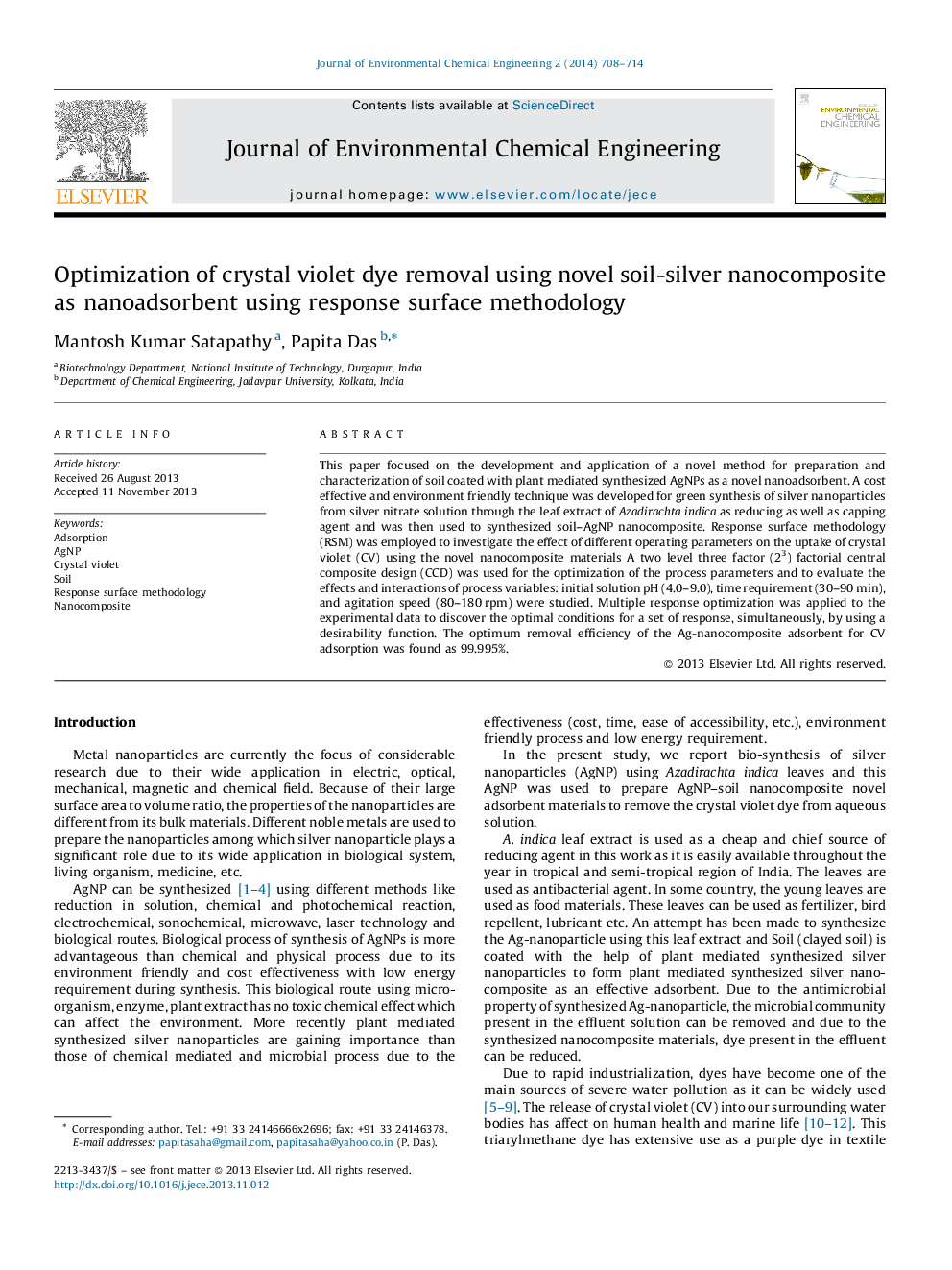| کد مقاله | کد نشریه | سال انتشار | مقاله انگلیسی | نسخه تمام متن |
|---|---|---|---|---|
| 222187 | 464270 | 2014 | 7 صفحه PDF | دانلود رایگان |
• Plant mediated Ag nanoparticle synthesis using bio-reduction process.
• Novel AgNP–soil nanocomposite adsorbent preparation.
• Nano-composite used for removal of crystal violet dye.
• Optimizations of the process parameter for dye removal using RSM analysis.
• 99.995% CV dye removal can be achieved using this novel adsorbent.
This paper focused on the development and application of a novel method for preparation and characterization of soil coated with plant mediated synthesized AgNPs as a novel nanoadsorbent. A cost effective and environment friendly technique was developed for green synthesis of silver nanoparticles from silver nitrate solution through the leaf extract of Azadirachta indica as reducing as well as capping agent and was then used to synthesized soil–AgNP nanocomposite. Response surface methodology (RSM) was employed to investigate the effect of different operating parameters on the uptake of crystal violet (CV) using the novel nanocomposite materials A two level three factor (23) factorial central composite design (CCD) was used for the optimization of the process parameters and to evaluate the effects and interactions of process variables: initial solution pH (4.0–9.0), time requirement (30–90 min), and agitation speed (80–180 rpm) were studied. Multiple response optimization was applied to the experimental data to discover the optimal conditions for a set of response, simultaneously, by using a desirability function. The optimum removal efficiency of the Ag-nanocomposite adsorbent for CV adsorption was found as 99.995%.
Journal: Journal of Environmental Chemical Engineering - Volume 2, Issue 1, March 2014, Pages 708–714
